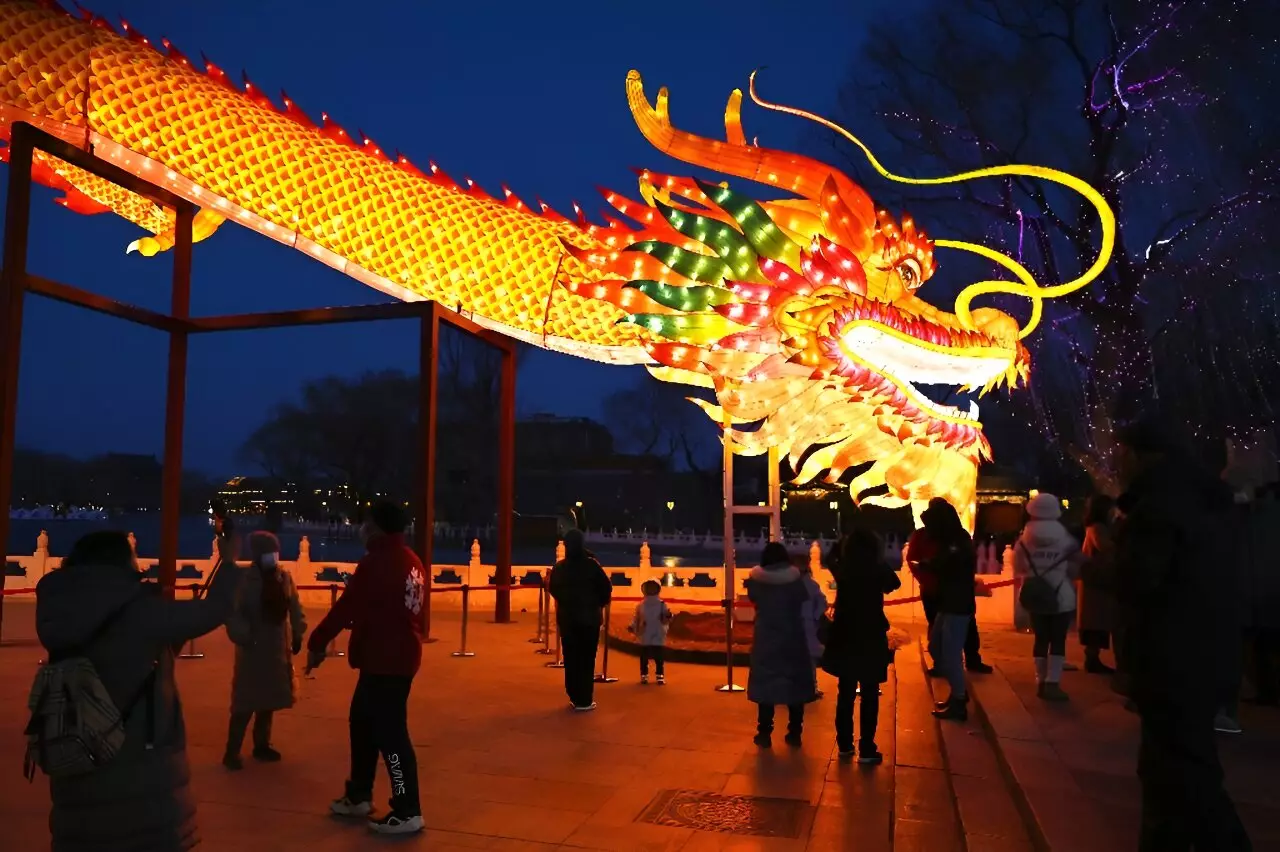China’s latest new year holiday spending has surpassed pre-pandemic levels, signaling a significant increase in domestic consumption after a prolonged period of economic struggles. According to official figures released by Beijing’s Ministry of Culture and Tourism, spending on entertainment, dining, and travel during this year’s “Golden Week” saw a remarkable surge, marking a rare bright spot in an economy grappling with deflation and sluggish consumer demand.
Chinese travelers made an impressive 474 million trips across the country during the eight-day holiday break, demonstrating a notable increase of 19 percent compared to 2019 figures. The surge in domestic tourism led to a substantial increase in spending, with the total expenditure on tourism reaching 632.7 billion yuan ($87.9 billion), up by 7.7 percent from 2019 levels, as reported by the ministry.
Despite the positive indicators of increased spending and travel activity, economists remain cautious about interpreting these figures as a full-fledged economic recovery. Ting Lu, chief China economist at Nomura, highlighted the importance of considering the low base from the previous year due to the strict pandemic measures in place during the COVID ‘exit wave.’ Lu emphasized the need for a more nuanced analysis of the data to fully grasp the underlying trends in consumer behavior.
While the overall spending during the holiday period showed a significant uptick, the average spending per trip actually decreased by 9.5 percent compared to 2019 levels, according to calculations by Nomura. This decline in per-trip spending raises questions about the sustainability of the current consumption patterns and the potential impact on long-term economic recovery.
The surge in holiday spending comes at a time when China is facing multiple economic challenges, including a prolonged crisis in the property sector, rising youth unemployment, and a global economic slowdown impacting demand for Chinese exports. Policymakers have taken several measures to stimulate growth, including targeted initiatives and a significant issuance of sovereign bonds to boost infrastructure investment and encourage consumer spending. However, the effectiveness of these measures remains limited, with consumer prices falling at the fastest pace in over 14 years in January.
China’s recent holiday spending surge offers a glimmer of hope for a struggling economy, but the underlying challenges and uncertainties persist. While the increase in domestic consumption is a positive sign of recovery, analysts caution against premature optimism and stress the need for sustained economic policies to address the systemic issues hindering long-term growth. As China navigates through a complex economic landscape, the resilience and adaptability of its consumer base will play a crucial role in shaping the trajectory of its post-pandemic recovery.


Leave a Reply